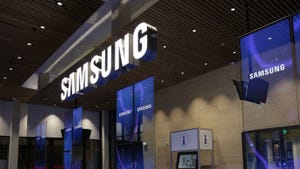ETSI give TLC to MEC – aging buzzword to get a facelift
Multi-access Edge Computing (MEC) might have been given a bit of attention in months gone, but with the 5G dawn about to break a resurgence for MEC could be on the cards.
February 22, 2018

Multi-access Edge Computing (MEC) might have been given a bit of attention in months gone, but with the 5G dawn about to break a resurgence for MEC could be on the cards.
While it does not sound like the sexiest part of the mobile industry, MEC is crucially important. If we are to live the 5G dream of 8K videos or instant access to insight, the ability to store and cache data on the edge of the network is critical. This is an old story for the industry, but it is a narrative which has been neglected in recent months. ETSI is one organization which seems to be trying to gather some extra steam for the forgotten buzzword.
“As the first Standards Developing Organization to address the challenges of MEC, ETSI brings the world’s leading experts on MEC to the table,” said Alex Reznik, Chair of ETSI MEC Industry Specification Group. “The ETSI ISG MEC can make a significant impact in the effort to make 5G a reality and we invite the industry to take advantage of everything we have to offer.”
MEC is of course only one piece of the 5G puzzle and a step in the complicated journey of virtualization, but one which is very important. Will virtual assistants be able to perform adequately without it, or will latency be low enough for autonomous vehicles or remote surgery? Not only will we not be able to realise some of these glorious usecases, ignoring MEC could potentially undermine the whole premise of the 5G system architecture, which is supposed to be a distributed network. With the 5G light breaking over the horizon ETSI is shifting the focus back to MEC.
As part of the push, ETSI has released two white papers while also creating a Hackathon framework to accelerate multi-access edge computing adoption and interoperability, and encourage all stakeholders to use the group’s specifications to develop edge applications. Collaboration between the various different parties will be critical here, and considering some of the parties involved there is risk of a few disagreements.
“While MEC is central to enabling the world of 5G applications over both 4G and 5G networks, it is only part of a solution to a bigger puzzle,” Reznik had previously said. “Increasingly, the industry is looking for guidance on how to put the overall solution together. By providing end-to-end solution guidance, encouraging and promoting the market through events like Hackathons and other related activities, our group is stepping up to this challenge.”
ETSI is kicking starting the refocus onto MEC, but we expect this to be a much more prominent talking point (once again) over the next couple of months.
About the Author(s)
You May Also Like









.png?width=300&auto=webp&quality=80&disable=upscale)

_1.jpg?width=300&auto=webp&quality=80&disable=upscale)


.png?width=800&auto=webp&quality=80&disable=upscale)